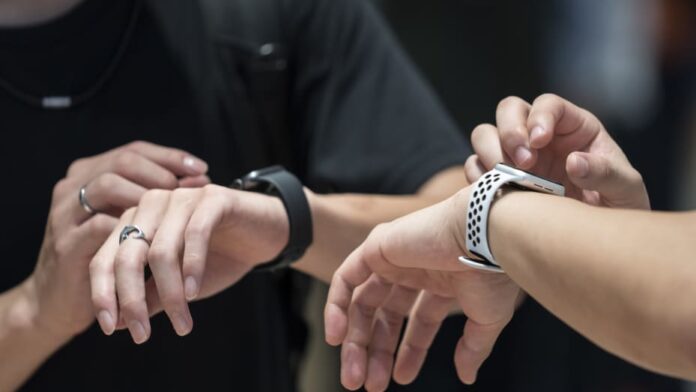Wearable health and fitness gadgets, such as sensor-enabled watches, wristbands, rings, skin patches, eyeglasses, and clothes, surpassed $36 billion in 2020 and are expected to surpass $100 billion by 2028.
The rise in popularity of wearables from Apple, Amazon, Google, and other tech and health businesses has fostered this trend, which has advanced the gadgets beyond basic fitness trackers. Incorporating a broader variety of medical data from these trackers into the digital health ecosystem is becoming more popular.
Fitness trackers from businesses like Apple, Amazon, and Google have gone from being low-tech gadgets that counted steps to being the next trend in personal health.
- The US has imposed new trade restrictions on a dozen more Chinese technology companies.
- Facebook, Twitter and LinkedIn secure Afghan users’ accounts amid Taliban takeover
Tracking fitness and workout data for personal use or sharing with friends can be useful and fun. But there’s an increasing interest in incorporating a wider range of medical data into the digital health ecosystem — piggybacking on the dramatic rise in remote telehealth services necessitated during the Covid-19 pandemic — making individuals’ information accessible to physicians and hospitals as part of electronic medical health records.
The wearables market got moving more than a decade ago with basic fitness, workout, and sports-activity tracking devices. Now, nearly 30% of Americans now use a wearable health care device, many of which now have the capabilities to track, monitor and transmit data on heart rate and rhythm, blood pressure, body temperature, blood sugar levels, quality of sleep and even early warning signs of Covid-19 infection.
Fitbit helped launch the trend in 2009 with a clip-on gizmo that recorded the wearer’s movements, sleep and calories. That model morphed into a wrist band, which over the years added more biosensors and Bluetooth connectivity for downloading data to smartphones. Google parent Alphabet acquired Fitbit for $2.1 billion in January.
Apple entered the space in 2015 with the debut of its Watch, since adding a bevy of health-related functions and apps and spawning a platform for third-party developers to create tools utilized not only by consumers but also health care organizations and researchers for accessing and analyzing data captured on their smartwatches. It has also aligned with fitness companies like Nike, Strava and Adidas to allow them to synchronize their activity apps to the watch. In 2020, the Apple Watch generated nearly $13 billion in sales, capturing 65% of the global smartwatch market by revenue, research firm Strategy Analytics estimates.
This burgeoning market has attracted other Big Tech players, including Amazon, maker of the Halo smart band, and Huawei, which unveiled its Watch 3 this year. There also are a variety of other smartwatch entrants from the consumer electronics realm, among them Samsung, Garmin and Withings.
In the pure-play category, Finnish startup Oura designed a ring embedded with biosensors for monitoring sleep, heart rate and body temperature. In May, the company announced a $100 million Series C investment round, bringing its total funding to more than $148 million. And Peloton is reportedly planning a digital heart rate armband. WATCH NOWVIDEO06:18Oura Ring CEO on growth of wearables during the pandemic
The global market for wearable health and fitness devices — including sensor-laden watches, wrist bands, rings, skin patches, eyeglasses and clothing — reached more than $36 billion in 2020, according to Fortune Business Insights, and is projected to top $114 billion by 2028 at a CAGR of 15.4%. Deloitte Global predicts that the market segment just for smartwatches and smart patches will ship 320 million units worldwide in 2022, a figure likely to reach 440 million by 2024.
“There is significant money in this area from venture capital and private investment sources,” said Deloitte’s Paul Silverglate, vice chair and U.S. technology sector leader.
Several medtech companies have introduced smart patches, penny-sized swaths that adhere to the skin and use microscopic needles that act as biosensors and deliver medications. BioIntelliSense, based in Redwood City, Calif., created the BioSticker, worn on the upper left chest for continuous monitoring and data capture of respiratory rate, heart rate at rest and skin temperature. Publicly owned Insulet, based in Acton, Massachusetts, has developed OmniPod, a patch that serves as an insulin pump.
Sensorized clothing has emerged, too. Montreal-based Hexoskin developed a line of smart shirts that collect cardiac, respiratory and activity data, and transmits it to an iOS or Android compatible device. The company partnered with the Canadian Space Agency on an extraterrestrial version, Astroskin, to track astronauts’ vitals while rocketing out of this world.





